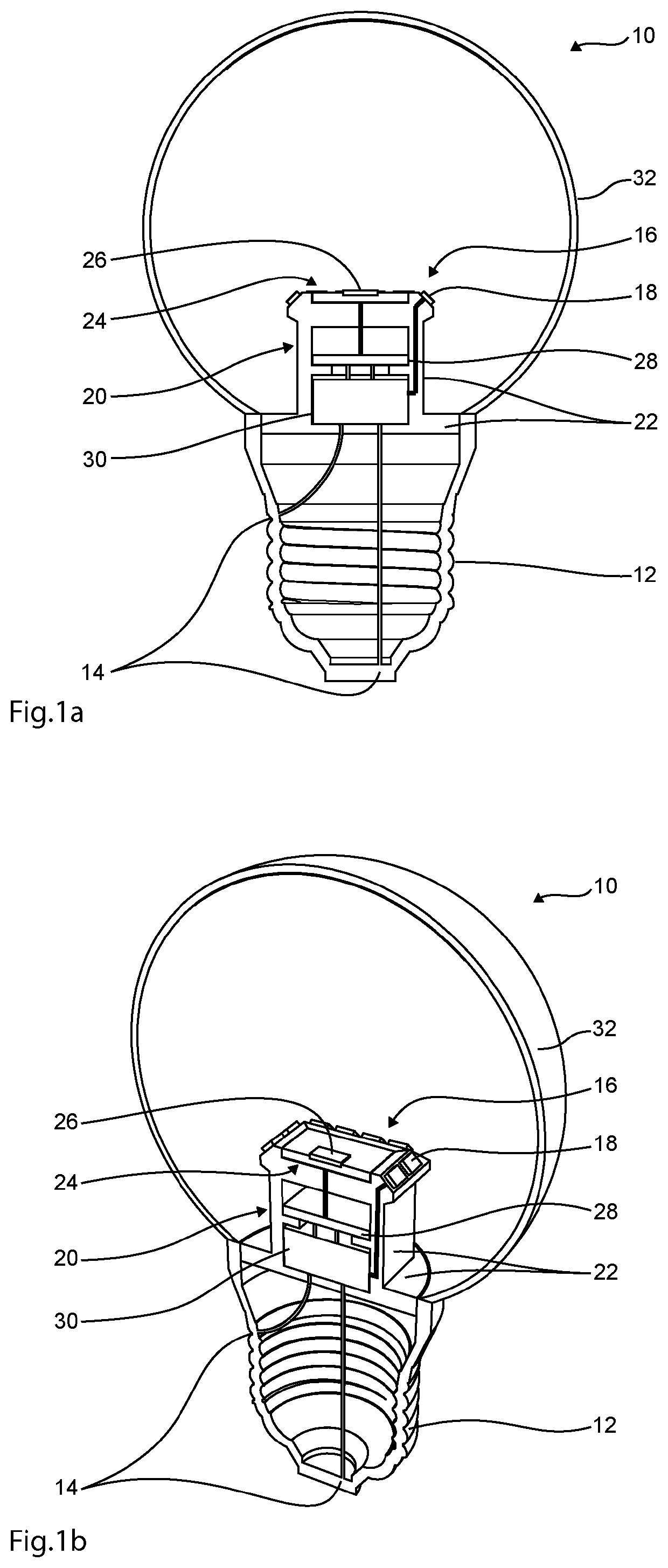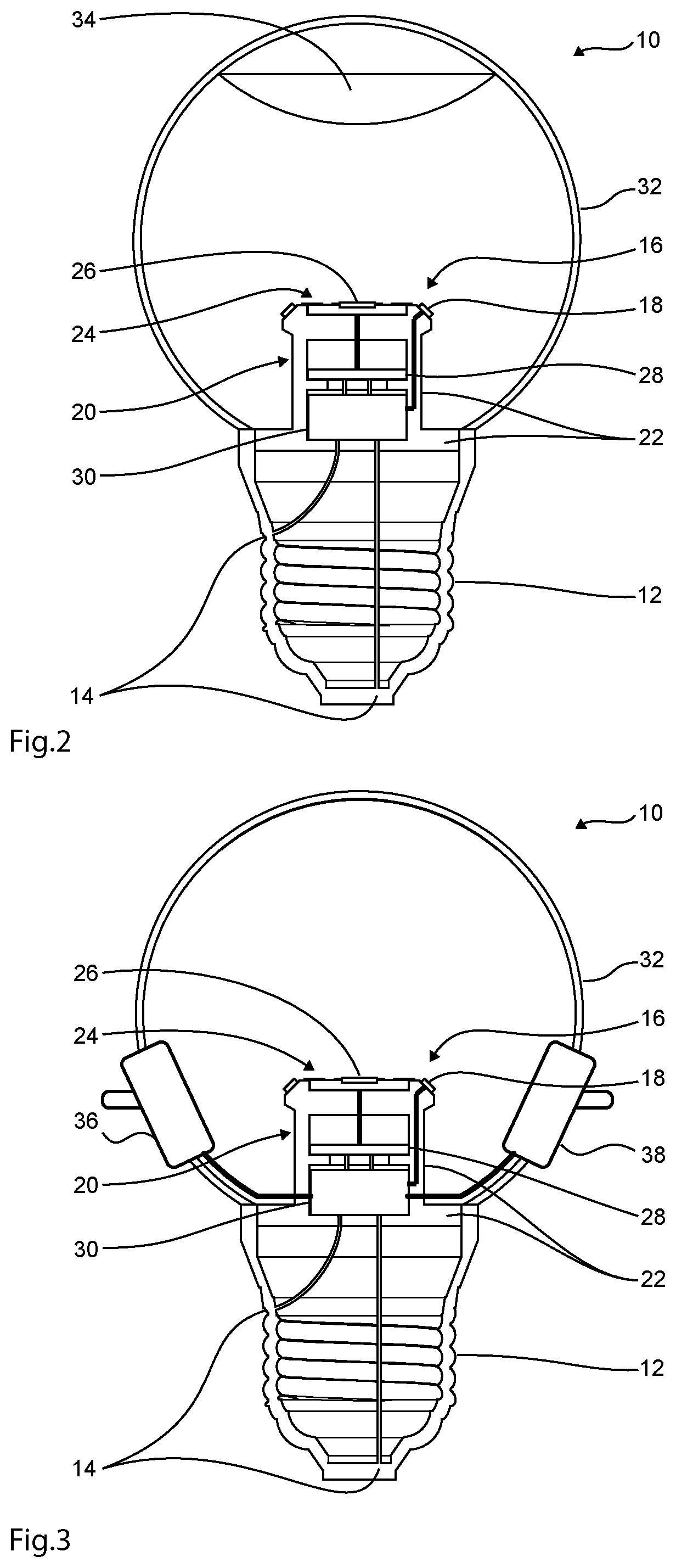Radar detector for monitoring of bodily functions
a technology for bodily functions and detectors, applied in the direction of sensors, measuring/recording heart/pulse rate, reradiation, etc., can solve the problems of weak signals, limited spatial range, system interference, etc., to improve spatial accuracy and resolution, small and flexible, and improve the effect of sensitivity in remote detection
- Summary
- Abstract
- Description
- Claims
- Application Information
AI Technical Summary
Benefits of technology
Problems solved by technology
Method used
Image
Examples
Embodiment Construction
[0063]With reference to FIGS. 1a and 1b, a lamp 10 is illustrated having a base 12 that can fit in a socket of a light-fixture (not shown). In the shown embodiment, the base 12 is an Edison screw. In other embodiments, bases configured for other socket are used, such as bayonet mounts and Bi-pin connectors. The base 12 has an electric contact that can establish an electric connection with a socket. The lamp has a light emitter 16 in the form of several Light-Emitting Diodes (LEDs) 18. The diodes are directed outward so that they illuminate the surroundings of the lamp 10.
[0064]The lamp 10 also has a detector 20 with a support structure 22 that is connected to and supported by the base 12. A CW radar module 24 is supported by the support structure 22. The radar module 24 has an antenna 26 that is oriented to emit microwaves in direction away from the base 12. The radar module 24 radiate microwaves at maximum power in this direction and receives microwaves at maximum power gain from t...
PUM
 Login to View More
Login to View More Abstract
Description
Claims
Application Information
 Login to View More
Login to View More - R&D
- Intellectual Property
- Life Sciences
- Materials
- Tech Scout
- Unparalleled Data Quality
- Higher Quality Content
- 60% Fewer Hallucinations
Browse by: Latest US Patents, China's latest patents, Technical Efficacy Thesaurus, Application Domain, Technology Topic, Popular Technical Reports.
© 2025 PatSnap. All rights reserved.Legal|Privacy policy|Modern Slavery Act Transparency Statement|Sitemap|About US| Contact US: help@patsnap.com



